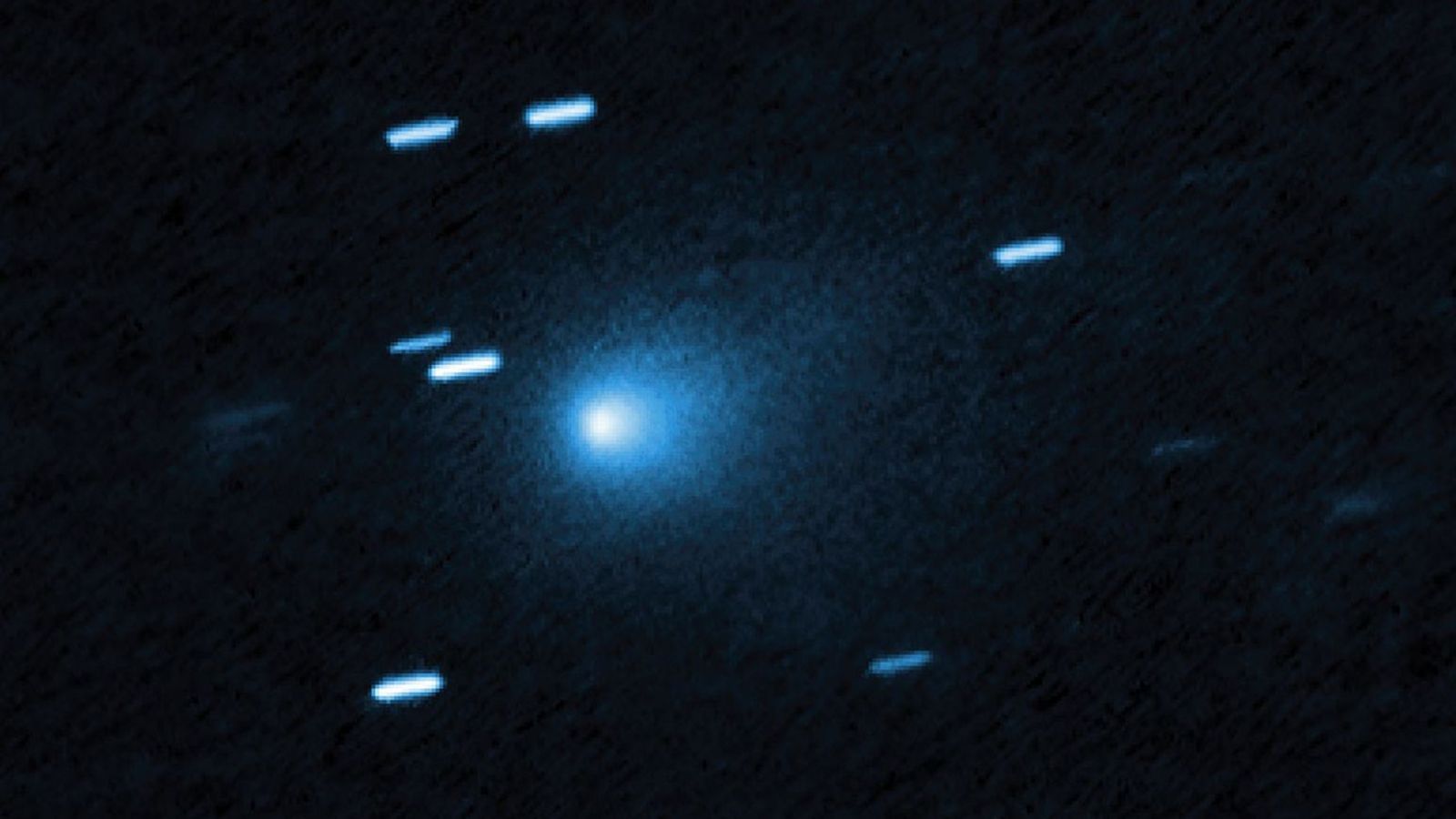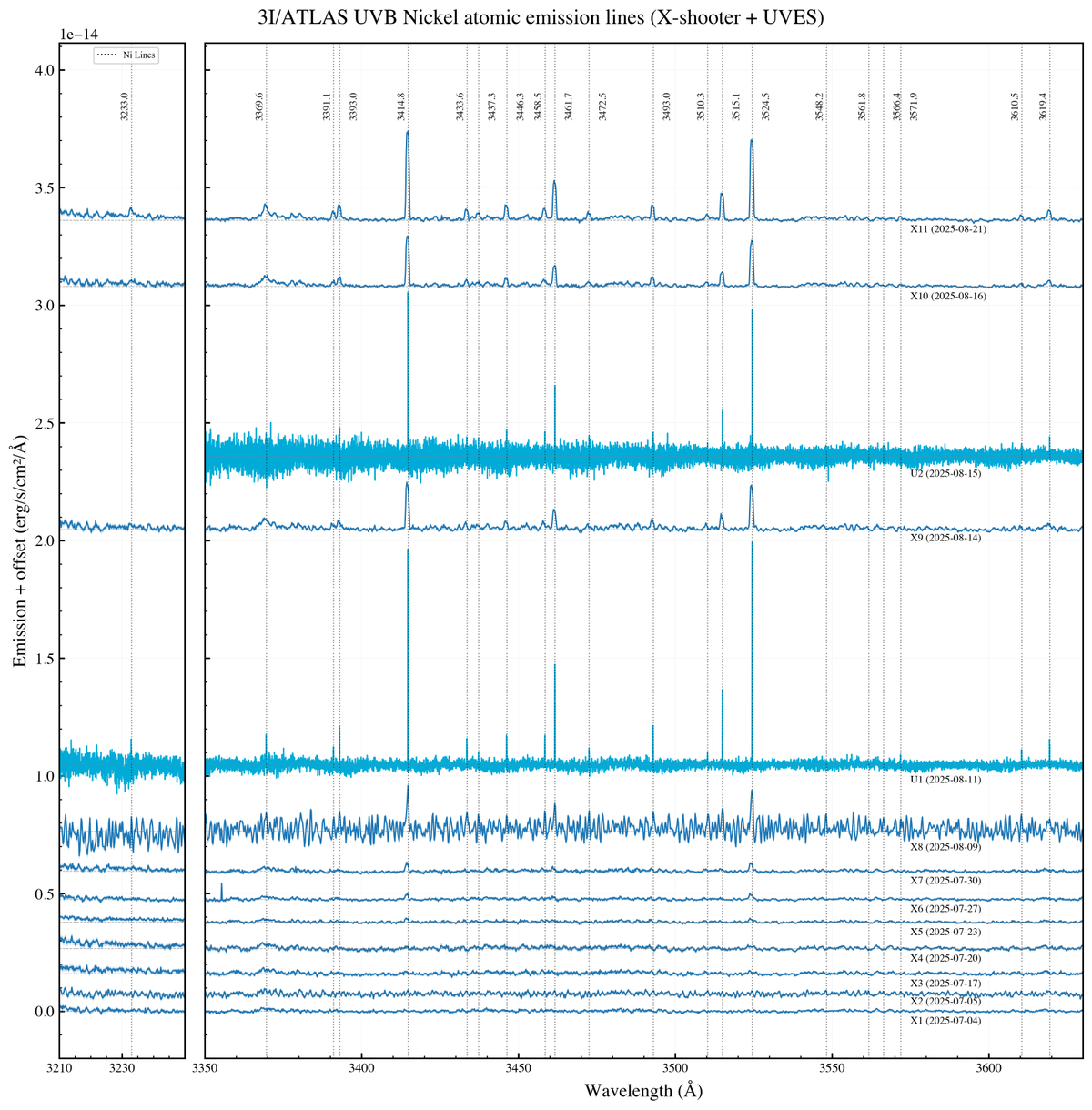Follow us on Google News (click on ☆)
The international team led by Rohan Rahatgaonkar and Darryl Z. Seligman used the Very Large Telescope (VLT) in Chile to track the chemical evolution of this comet from elsewhere.

Hubble Space Telescope image showing the interstellar comet 3I/ATLAS with its coma and nascent tail.
Credit: NASA/ESA/David Jewitt (UCLA)/Joseph DePasquale (STScI)
Their spectroscopic observations revealed the presence of atomic nickel vapor at a distance of 3.88 astronomical units from the Sun, nearly four times the Earth-Sun distance. What makes this detection particularly remarkable is that normally, at such distances, temperatures are too cold for metals to transition directly from solid to gaseous state.
The researchers found that the intensity of this metallic emission increased significantly as the comet approached our star.
The simultaneous absence of iron detection in the obtained spectra suggests a nickel release mechanism different from simple sublimation. Scientists propose that the nickel could be bound to complex organic molecules that break down under solar radiation. These compounds, called metal carbonyls, could release nickel atoms at temperatures well below those needed to vaporize the pure metal. This hypothesis would explain why nickel is observed without detecting iron, as the latter is less likely to form this type of volatile complex.

UV/blue spectra of 3I/ATLAS showing nickel emission during different observation periods.
Credit: Rahatgaonkar et al.
Complementary observations from the James Webb Space Telescope revealed other chemical peculiarities of this interstellar comet. Its atmosphere, called the coma, contains an unusually high proportion of carbon dioxide compared to water, a ratio that differs from that observed in most comets in our Solar System. The simultaneous detection of water ice and carbon monoxide suggests a mixture of icy materials that are gradually warming up. These chemical characteristics could reflect the particular conditions of the stellar system where this comet formed, potentially billions of years ago.
Continued observations over the coming weeks promise new discoveries about the composition of interstellar materials. Astronomers hope to detect the emergence of new chemical species and better understand the processes at work in this exceptional interstellar visitor. These comparative studies between interstellar comets and Solar System comets help us determine whether the basic ingredients for forming planets are universal or vary depending on stellar environments.
Interstellar comets: Cosmic messengers
Interstellar comets like 3I/ATLAS represent a category of celestial objects that are not gravitationally bound to a particular star. They travel through the galaxy, occasionally passing through planetary systems like ours. Their high speed and hyperbolic trajectory allow them to be distinguished from comets native to our Solar System.
These cosmic travelers formed around other stars, probably in protoplanetary disks similar to the one that gave birth to our own system. Their composition reflects the particular physical and chemical conditions of their original system, making them natural samples of extraterrestrial materials. Unlike meteorites, they have not been modified by entry into Earth's atmosphere.
The study of these objects allows astronomers to directly compare matter from different stellar systems. Each detected interstellar comet thus offers a unique opportunity to test whether planetary formation processes are universal or produce different results depending on the stellar environment. Their rarity and rapid passage make each observation particularly valuable for the scientific community.
Astronomical spectroscopy: Decoding starlight
Spectroscopy is a fundamental technique in astronomy that involves breaking down the light from celestial objects into its different wavelengths. Each chemical element and each molecule has a unique spectral signature, like a luminous fingerprint. By analyzing these spectra, scientists can determine the chemical composition of objects located light-years away.
In the case of 3I/ATLAS, researchers used spectrographs like X-shooter and UVES installed on the Very Large Telescope in Chile. These instruments are capable of detecting specific emission lines corresponding to excited nickel atoms. The intensity of these lines makes it possible to quantify the amount of nickel present in the comet's coma.
The detection of nickel without simultaneous iron is particularly revealing. It indicates that the nickel is not released by simple heating, but probably by more complex chemical processes. These fine spectral observations make it possible to trace back to the physicochemical mechanisms occurring on the comet's surface, even at distances where instruments cannot directly resolve its structure.